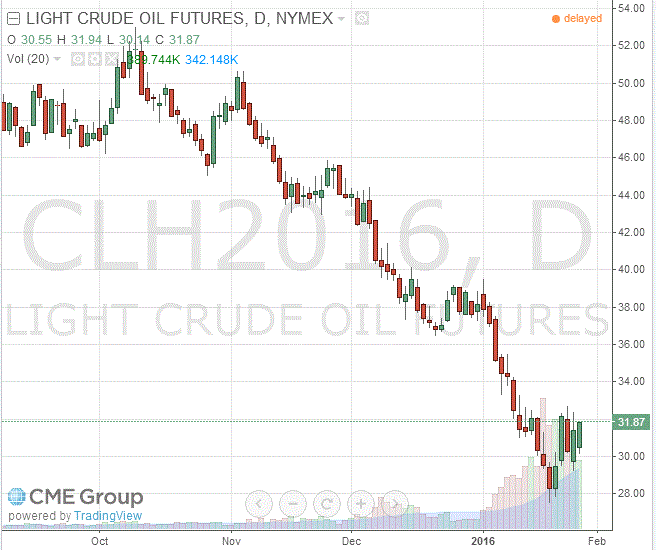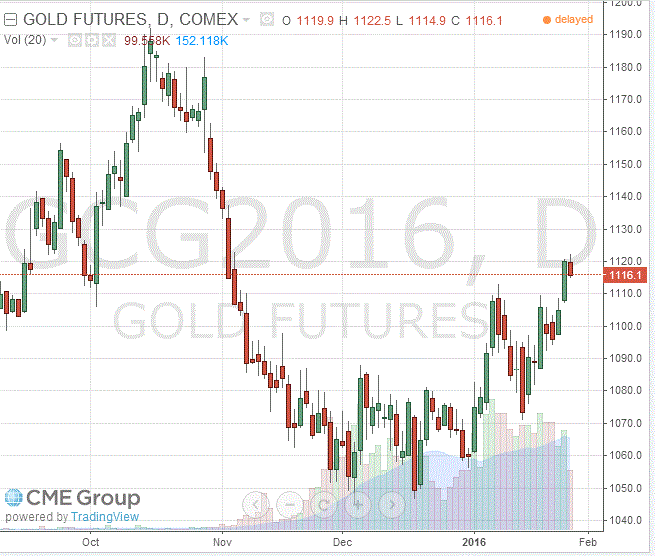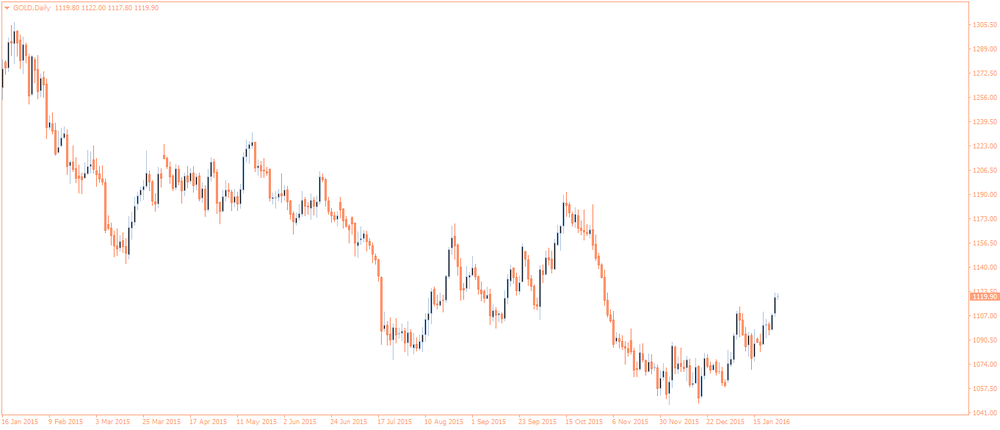Noticias del mercado
-
17:51
Oil prices climb despite an increase in U.S. crude inventories
Oil prices rose despite an increase in U.S. crude inventories. The U.S. Energy Information Administration (EIA) released its crude oil inventories data on Wednesday. U.S. crude inventories increased by 8.38 million barrels to 494.9 million in the week to January 22.
Analysts had expected U.S. crude oil inventories to rise by 3.3 million barrels.
Gasoline inventories increased by 3.5 million barrels, according to the EIA.
Crude stocks at the Cushing, Oklahoma, declined by 771,000 barrels.
U.S. crude oil imports decreased by 69,000 barrels per day.
Refineries in the U.S. were running at 87.4% of capacity, down from 90.6% the previous week.
Reuters reported on Wednesday that according to senior Russian officials, Russia's government did not discuss cooperation with the Organization of the Petroleum Exporting Countries (OPEC).
WTI crude oil for March delivery rose to $31.87 a barrel on the New York Mercantile Exchange.
Brent crude oil for March increased to $32.40 a barrel on ICE Futures Europe.
-
17:33
Gold declines on a stronger U.S. dollar
Gold price slightly declined ahead of the release of the Fed's monetary policy meeting results later in the day. Analysts expect the Fed to keep its monetary policy unchanged.
A stronger U.S. dollar weighed on gold. The U.S. dollar rose after the release of the U.S. housing market data. The U.S. Commerce Department released new home sales data on Wednesday. New home sales increased 10.8% to a seasonally adjusted annual rate of 544,000 units in December from 491,000 units in November. November's figure was revised up from 490,000 units. Analysts had expected new home sales to reach 500,000 units.
February futures for gold on the COMEX today fell to 1116.10 dollars per ounce.
-
16:57
U.S. crude inventories climb by 8.38 million barrels to 494.9 million in the week to January 22
The U.S. Energy Information Administration (EIA) released its crude oil inventories data on Wednesday. U.S. crude inventories increased by 8.38 million barrels to 494.9 million in the week to January 22.
Analysts had expected U.S. crude oil inventories to rise by 3.3 million barrels.
Gasoline inventories increased by 3.5 million barrels, according to the EIA.
Crude stocks at the Cushing, Oklahoma, declined by 771,000 barrels.
U.S. crude oil imports decreased by 69,000 barrels per day.
Refineries in the U.S. were running at 87.4% of capacity, down from 90.6% the previous week.
-
15:52
Profits of industrial companies in China drop 4.7% in December
China's National Bureau of Statistics (NBS) said on Wednesday that profits of industrial companies in China declined 4.7% in December from a year earlier, after a 1.4% fall in November.
In 2015 as whole, industrial profits fell 2.3% from a year earlier.
Profits in the mining sector dropped 58.2% in 2015, while manufacturing profits rose 2.8%.
-
10:43
Survey by Thomson Reuters GFMS: gold prices are expected to recover to above $1,200 an ounce by the end of the year
According to the survey by Thomson Reuters GFMS published on Tuesday, gold prices are expected to recover to above $1,200 an ounce by the end of the year. The average price is expected to be $1,164 an ounce in the full year.
The reason for the recovery are the slower pace of the Fed's interest rate hikes, a weak global economic growth and a weak yuan.
The survey said that gold demand is expected to rise by 5% in 2016.
-
10:22
JPMorgan & Chase Co.’s chief Asia strategist Adrian Mowat: capital outflows from China could hit $500 billion this year
JPMorgan & Chase Co.'s chief Asia strategist, Adrian Mowat, said on Tuesday that capital outflows from China could hit $500 billion this year. He noted that while China's central bank tries to control the yuan's fall, those holding assets denominated in the yuan could sell to avoid losses.
-
10:14
China National Petroleum Corporation (CNPC): oil demand in China will rise by 4.3% in 2016
According to China National Petroleum Corporation (CNPC), the state-owned company, on Tuesday, oil demand in China will rise by 4.3% to 11.32 million barrels per day (bpd) in 2016, compared to 4.8% increase last year.
China's oil imports are expected to climb by 7.3% to 7.14 million bpd this year, compared to nearly 9.0% rise last year.
The CNPC said that China's commercial oil reserves totalled 315 million barrels at the end of 2015.
China is the world's second-largest oil consumer.
-
07:41
Oil prices retreated amid profit-taking
West Texas Intermediate futures for March delivery declined to $31.07 (-1.21%), while Brent crude declined to $31.61 (-0.60%) erasing some of yesterday's gains amid profit-taking.
There are talks about a possibility of a deal between oil producers in an attempt to stop price declines. However analysts say that any deal of that kind is unlikely.
The World Bank cut its crude price forecast for 2016 to $37 a barrel from $51 per barrel forecasted earlier. John Baffes, senior economist at the World Bank, said: "Low prices for oil and commodities are likely to be with us for some time. While we see some prospect for commodity prices to rise slightly over the next two years, significant downside risks remain."
-
07:29
Gold steadied
Gold steadied close to a twelve-week high at $1,120.70 (+0.04%) ahead of the end of the Federal Reserve's two-day policy meeting. No changes are expected this time. Expectations for a rate hike in March have also declined recently. Economists surveyed by Reuters now expect the U.S. Federal Reserve to raise interest rates three times this year rather than four. The central bank of the U.S. needs to consider struggling global economy. Higher interest rates are unfavorable for the non-interest-paying precious metal, that's why a decision to postpone a rate hike would be welcomed by gold investors.
Data showed that China's gold imports rose as investors avoided falling stocks.
-
01:03
Commodities. Daily history for Jan 26’2016:
(raw materials / closing price /% change)
Oil 30.51 -2.99%
Gold 1,119.90 -0.03%
-


